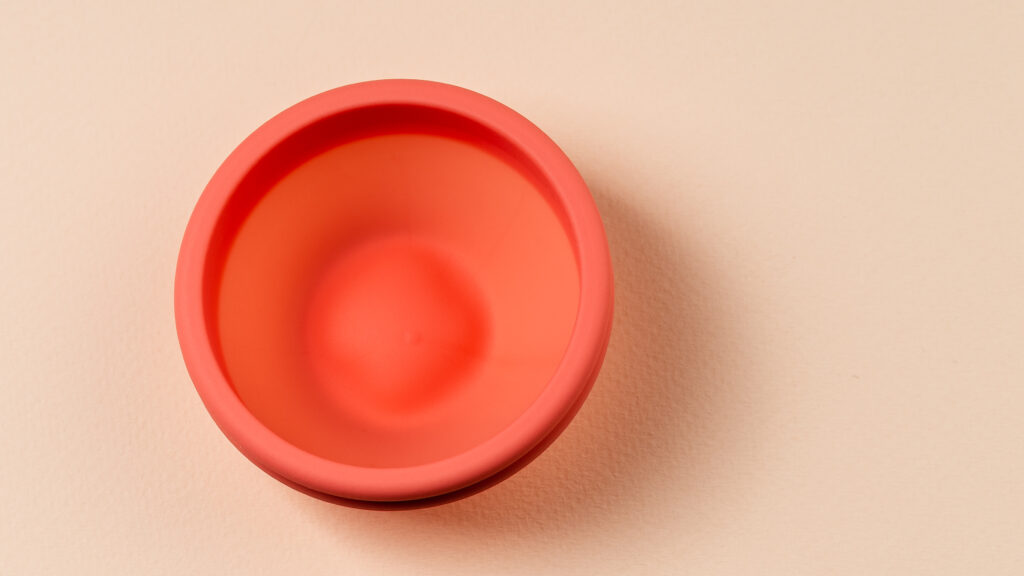There are many period products on the market from pads, tampons and cups to discs. Yet, there is a dearth of reliable information about how much menstrual blood they can hold — a useful metric for clinicians as well as consumers.
Heavy menstrual bleeding affects up to a third of people who menstruate and that can only be diagnosed using traditional menstrual products like pads and tampons. However, as more people use non-traditional products, clinicians are looking for data to advise patients on what would be the best product to absorb heavy menstrual flow.
advertisement
Now, a new study suggests that a menstrual disc may be the best product to use for those experiencing a heavy flow, according to research published Monday in the journal BMJ Sexual & Reproductive Health. According to the researchers, there is no industry standard when it comes to comparing traditional products to modern menstrual products like cups, discs and period underwear — all things that Bethany Samuelson Bannow sees regularly in her clinic.
“I think what really motivated this study for me is the sheer number of patients in my clinic who use menstrual cups,” said Bannow, corresponding author and assistant professor of medicine at Oregon Health & Science University. She speculates that people living in Oregon love using cups because they really value sustainability, but it makes it difficult to compare to the current metric, called PBAC, which focuses on the number of pads or tampons that become saturated. According to the PBAC or pictorial blood loss assessment chart, a patient can be diagnosed with heavy menstrual bleeding if they need to change a pad or tampon more often than every two hours.
“But what if they use a cup and they have to change every six hours?” Bannow asked, “What does that mean?”
advertisement
So, Bannow and her colleagues set out to compare the capacity of different products. Out of 21 commonly used products, the research team found that menstrual discs held the most blood with an average of 61 ml, while period underwear only held 1 ml. Tampons, pads and menstrual cups held between 20 to 50 ml of blood.
“These guys did something that I thought was very innovative and inventive,” said Paul Blumenthal, a professor of obstetrics and gynecology at Stanford University and one of the authors of the editorial accompanying the paper. He was not a part of this study. “I remember reflecting to myself when this paper came through … ‘Oh my goodness, after all this time, we don’t have good data on menstrual pads or menstrual products and their capacities?’”
Menstruation remains a taboo topic that has spilled over into the world of research despite it being a normal bodily experience that affects over 300 million people globally every day. In the editorial, the authors reference a 2020 study that did a quick search on PubMed which yielded only 400 published studies focused on menstrual blood over the last decade between 2011 and 2018, in comparison to over 10,000 publications on erectile dysfunction during the same time period.
“I think this is a really neat study and I think times have changed,” said Monica Woll Rosen, an assistant professor in obstetrics and gynecology at the University of Michigan, who regularly sees patients who use all types of menstrual hygiene products. She was also not a part of this study. “Patients now have a larger variety of options to choose from for menses and menstrual blood collection and they should have the ability to understand what will have the best capacity to absorb menstrual blood.”
Blumenthal added that the researcher’s use of red blood cells truly proves that “blood is thicker than water,” since they found different capacities than were advertised. In industry (and in commercials), companies usually use saline water to test the capacity of products.
The researchers used expired packed blood cells, the bagged kind found in blood banks, which are just red blood cells separated from whole blood. Neither form is really the same as menstrual blood, which also includes endometrial cells and vaginal secretions, but it is better than just using water or saline. And blood in its whole form is just harder to find. Doing this study using menstruating people would have also been very difficult since people bleed differently and their level of comfort might have affected results. According to Bannow, though, there is an ongoing study comparing the use of menstrual cups and period underwear in people with heavy menstrual bleeding.
Hopefully, Bannow said, this research will help build an updated, more modern metric that can be used both in clinic and in research to quantify menstrual blood loss and diagnose heavy menstrual bleeding.
“I think the ultimate goal is to come up with a new version of the PBAC,” said Bannow.
“We were due for an update on this,” said Rosen. “And so I’m appreciative that this study was performed.”
Blumenthal imagines a standard that puts all menstrual products on a scale similar to peppers, hot sauces and salsas being rated by the Scoville scale.
“When you go to the store and buy a menstrual hygiene product, maybe it should have what the capacity is and it should be standardized across the industry. I don’t know if the companies would buy into that,” Blumenthal said. “But, I think from the consumer perspective, it would be pretty useful information.”
He adds that this research will open a window for other researchers to study menstrual science.
“Just keep your eye on this space. I think this is going to keep growing,” Blumenthal said. “Okay, this is going to keep flowing.”

